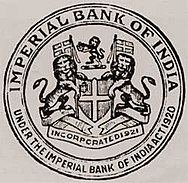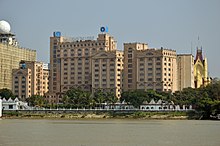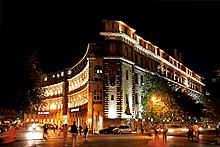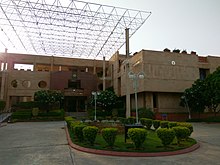SBI BANKING ONLINE
SBI Banking Online
SBI Banking Online
SBI online service
Online Cash Alert website!SBI HOME LOAN
SBI Home Loans offers a one stop solution to a home buyer.. You can browse through our range of home loan products, , check your eligibility and apply online!.UK - Online SBI Global
Welcome to SBI United Kingdom.. Notice ... State Bank of India, UK is introducing enhanced security , measures for telephone banking.State Bank of India | LinkedIn
Learn about working at State Bank of India. Join LinkedIn today for free..The State Bank of India (SBI) is an Indian multinational, public Sector banking and financial services statutory body. It is a government corporation statutory body headquartered in Mumbai, Maharashtra. The Corporation is ranked 216th on the Fortune Global 500 list of the world's biggest corporations as of 2017. It is the largest bank in India with a 23% market share in assets, besides a share of one-fourth of the total loan and deposits market.[5][6]
 The bank descends from the Bank of Calcutta, founded in 1806, via the Imperial Bank of India, making it the oldest commercial bank in the Indian subcontinent. The Bank of Madrasmerged into the other two "presidency banks" in British India, the Bank of Calcutta and the Bank of Bombay, to form the Imperial Bank of India, which in turn became the State Bank of India in 1955.[7] The Government of India took control of the Imperial Bank of India in 1955, with Reserve Bank of India (India's central bank) taking a 60% stake, renaming it the State Bank of India. In 2008, the government took over the stake held by the Reserve Bank of India.[
The bank descends from the Bank of Calcutta, founded in 1806, via the Imperial Bank of India, making it the oldest commercial bank in the Indian subcontinent. The Bank of Madrasmerged into the other two "presidency banks" in British India, the Bank of Calcutta and the Bank of Bombay, to form the Imperial Bank of India, which in turn became the State Bank of India in 1955.[7] The Government of India took control of the Imperial Bank of India in 1955, with Reserve Bank of India (India's central bank) taking a 60% stake, renaming it the State Bank of India. In 2008, the government took over the stake held by the Reserve Bank of India.[ Contents
The roots of the State Bank of India lie in the first decade of the 19th century when the Bank of Calcutta later renamed the Bank of Bengal, was established on 2 June 1806. The Bank of Bengal was one of three Presidency banks, the other two being the Bank of Bombay (incorporated on 15 April 1840) and the Bank of Madras (incorporated on 1 July 1843). All three Presidency banks were incorporated as joint stock companies and were the result of royal charters. These three banks received the exclusive right to issue paper currency till 1861 when, with the Paper Currency Act, the right was taken over by the Government of India. The Presidency banks amalgamated on 27 January 1921, and the re-organised banking entity took as its name Imperial Bank of India. The Imperial Bank of India remained a joint stock company but without Government participation.
Pursuant to the provisions of the State Bank of India Act of 1955, the Reserve Bank of India, which is India's central bank, acquired a controlling interest in the Imperial Bank of India. On 1 July 1955, the Imperial Bank of India became the State Bank of India. In 2008, the Government of India acquired the Reserve Bank of India's stake in SBI so as to remove any conflict of interest because the RBI is the country's banking regulatory authority.
In 1959, the government passed the State Bank of India (Subsidiary Banks) Act. This made eight banks that had belonged to princely states into subsidiaries of SBI. This was at the time of the first Five Year Plan, which prioritised the development of rural India. The government integrated these banks into the State Bank of India system to expand its rural outreach. In 1963 SBI merged State Bank of Jaipur (est. 1943) and State Bank of Bikaner (est.1944).
SBI has acquired local banks in rescues. The first was the Bank of Bihar (est. 1911), which SBI acquired in 1969, together with its 28 branches. The next year SBI acquired National Bank of Lahore (est. 1942), which had 24 branches. Five years later, in 1975, SBI acquired Krishnaram Baldeo Bank, which had been established in 1916 in Gwalior State, under the patronage of Maharaja Madho Rao Scindia. The bank had been the Dukan Pichadi, a small moneylender, owned by the Maharaja. The new bank's first manager was Jall N. Broacha, a Parsi. In 1985, SBI acquired the Bank of Cochin in Kerala, which had 120 branches. SBI was the acquirer as its affiliate, the State Bank of Travancore, already had an extensive network in Kerala.
There has been a proposal to merge all the associate banks into SBI to create a single very large bank and streamline operations.[8]
The first step towards unification occurred on 13 August 2008 when State Bank of Saurashtra merged with SBI, reducing the number of associate state banks from seven to six. On 19 June 2009, the SBI board approved the absorption of State Bank of Indore. SBI holds 98.3% in State Bank of Indore. (Individuals who held the shares prior to its takeover by the government hold the balance of 1.7%.)[9]
The acquisition of State Bank of Indore added 470 branches to SBI's existing network of branches. Also, following the acquisition, SBI's total assets will approach ₹10 trillion. The total assets of SBI and the State Bank of Indore were ₹9,981,190 million as of March 2009. The process of merging of State Bank of Indore was completed by April 2010, and the SBI Indore branches started functioning as SBI branches on 26 August 2010.[10]
On 7 October 2013, Arundhati Bhattacharya became the first woman to be appointed Chairperson of the bank.[11] Mrs. Bhattacharya received an extension of two years of service to merge into SBI the five remaining associated banks.
Structure
Structure
The bank is headed by one Chairman , Rajnish Kumar and four Managing Directors, P.K. Gupta, C.K. Sinha, Arijit Basu and Anshula Kant.
Operations[
SBI provides a range of banking products through its network of branches in India and overseas, including products aimed at non-resident Indians (NRIs). SBI has 16 regional hubs and 57 zonal offices that are located at important cities throughout India.
Domestic presence[
SBI has 18,354 branches in India.[12] In the financial year 2012–13, its revenue was ₹2.005 trillion (US$28 billion), out of which domestic operations contributed to 95.35% of revenue. Similarly, domestic operations contributed to 88.37% of total profits for the same financial year.[12]
Under the Pradhan Mantri Jan Dhan Yojana of financial inclusion launched by Government in August 2014, SBI held 11,300 camps and opened over 3 million accounts by September, which included 2.1 million accounts in rural areas and 1.57 million accounts in urban areas.[13]
International presence
In 1989, SBI established an offshore bank, State Bank of India International (Mauritius) Ltd. This then amalgamated with The Indian Ocean International Bank (which had been doing retail banking in Mauritius since 1979) to form SBI (Mauritius) Ltd. Today, SBI (Mauritius) Ltd has 14 branches – 13 retail branches and 1 global business branch at Ebene in Mauritius.
In 1982, the bank established a subsidiary,
In Nigeria, SBI operates as INMB Bank. This bank began in 1981 as the Indo–Nigerian Merchant Bank and received permission in 2002 to commence retail banking. It now has five branches in Nigeria.
In Nepal, SBI owns 55% of "SBI Nepal". (The state-owned Employees Provident Fund of Nepal owns 15% and the general public owns the remaining 30%.) SBI Nepal has branches throughout the country.
In Moscow, SBI owns 60% of
In Indonesia, it owns 76% of PT Bank Indo Monex.
The State Bank of India already has a branch in Shanghai and plans to open one in
In Kenya, State Bank of India owns 76% of
In January 2016, SBI opened its first branch in
Former Associate Banks
SBI acquired the control of seven banks in 1960. They were the seven regional banks of former Indian princely states. They were renamed, prefixing them with 'State Bank of'. These seven banks were
The plans for making SBI a single very large bank by merging the associate banks started in 2008, and in September the same year, SBS merged with SBI. The very next year, State Bank of Indore (SBN) also merged. In the same year, a subsidiary named
On 15 February 2017, the Union Cabinet approved the merger of five associate banks with SBI.
The
Non-banking subsidiaries
Apart from five of its associate banks (merged with SBI since 1 April 2017), SBI's non-banking subsidiaries include:
In March 2001, SBI (with 74% of the total capital), joined with
Other SBI service points
As of 31 March 2017, SBI group (including associate banks) has 59,291 ATMs.
Since November 2017, SBI also offers an integrated digital banking platform named
Listings and shareholding
As on 31 March 2017,
| Shareholders | Shareholding |
|---|---|
| Promoters: Government of India | 54.23% |
| FIIs/GDRs/OCBs/NRIs | 18.17% |
| Banks & Insurance Companies | 10.00% |
| Mutual Funds & UTI | 8.29% |
| Others | 9.31% |
| Total | 100.0% |
The equity shares of SBI are listed on the
Employees
SBI is one of the largest employers in the country with 209,567 employees as on 31 March 2017, out of which there were 23% female employees and 3,179 (1.5%) employees with disabilities. On the same date, SBI had 37,875 Scheduled Castes (18%), 17,069 Scheduled Tribes (8.1%) and 39,709 Other Backward Classes (18.9%) employees. The percentage of Officers, Associates and Sub-staff was 38.6%, 44.3% and 16.9% respectively on the same date. Around 13,000 employees have joined the Bank in FY 2016–17. Each employee contributed a net profit of
Recent awards and recognition
See also
References
External links
| Wikimedia Commons has media related to State Bank of India. |
Subscribe to: Posts (Atom)
Subscribe to:
Posts (Atom)
SBI Banking Online SBI Banking Online ============================================================== ====================================...

-
SBI Banking Online SBI Banking Online ============================================================== ====================================...

























